Top AI Code Editors Every Developer Should Know in 2025
 syncfusion
syncfusion
TL;DR: In 2025, AI is no longer a bonus feature in code editors; it’s a game-changer. With tools like GitHub Copilot, Cursor, and Claude, AI assistants are now central to the developer experience. This blog explores how mastering AI fluency, regardless of the editor you use, is the key to boosting productivity, solving problems creatively, and building better software.
In 2025, artificial intelligence will have become a built-in capability in nearly every modern code editor. Tools like GitHub Copilot, Continue, Cursor, and Cline, etc., are no longer optional add-ons—they’re core to how developers write, navigate, and manage code every day. While the editor still serves as the main interface for writing software, the real productivity boost comes from how effectively developers use the AI assistants embedded within it.
Many developers mistakenly believe their choice of editor is what determines their efficiency. In reality, it’s not the platform, but the developer’s ability to interact with, prompt, and refine outputs from the AI that makes the biggest difference. This blog explores why AI fluency is now a critical skill and how mastering these tools, regardless of which editor you prefer, can help you code faster, solve problems more creatively, and build better software.
How code editors became AI-first
Just a few years ago, code editors were primarily text editors with syntax highlighting, basic autocomplete, and static analysis tools. Today, the landscape has radically transformed: AI is now an ever-present partner within our development environments.
From static IDEs to AI-augmented workspaces
Most editors are now equipped with powerful large language models (LLMs) like GPT-4, Claude, and Gemini. These tools assist with everything from generating functions and explaining code to writing tests and summarizing documentation, all inside your coding workspace.
The powerful agentic tools, such as Claude code, Codex, and Aider, also work within the terminal.
What began as autocompleting has now evolved into full-scale collaboration with AI. The editor and CLI are no longer just a code canvas; they’re a command center for intelligent, contextual help.
Let’s look at some CLI tools.
Anthropic Claude Code
Claude Code is an agentic coding tool that lives in your terminal, understands your codebase, and helps you code faster through natural language commands. By integrating directly with your development environment, Claude Code streamlines your workflow without requiring additional servers or complex setup.
Key capabilities:
Editing files and fixing bugs across your codebase
Answering questions about your code’s architecture and logic
Executing and fixing tests, linting, and other commands
Searching through git history, resolving merge conflicts, and creating commits and pull requests.
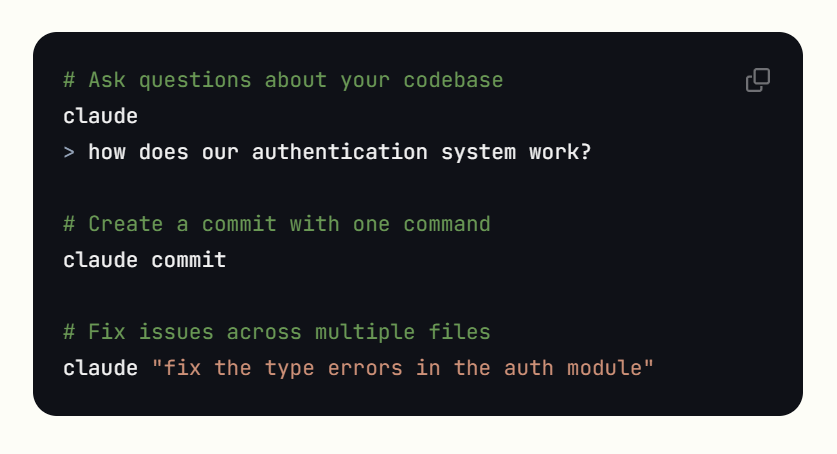
Anthropic Claude Code
GitHub Copilot
GitHub Copilot is an AI code completion tool. It acts like an intelligent coding assistant that suggests lines or blocks of code as you type, directly inside your Visual Studio Code editor.
Key features
Agent mode: Automates multifile coding tasks like a collaborative AI developer.
Copilot edits: Suggests and applies code changes across your codebase.
Prompt Management: Lets you save and reuse prompt files for consistent interactions.
Expanded language support: Adds support for C, C++, Kotlin, Swift, and more.
Copilot workspace: AI-powered pull request and review refinement environment.
Model enhancements: Integrates top AI models like Claude 3.7, GPT-4.5, and Gemini Flash.
Copilot Pro+ plan: Offers premium access to all AI models and more usage capacity.
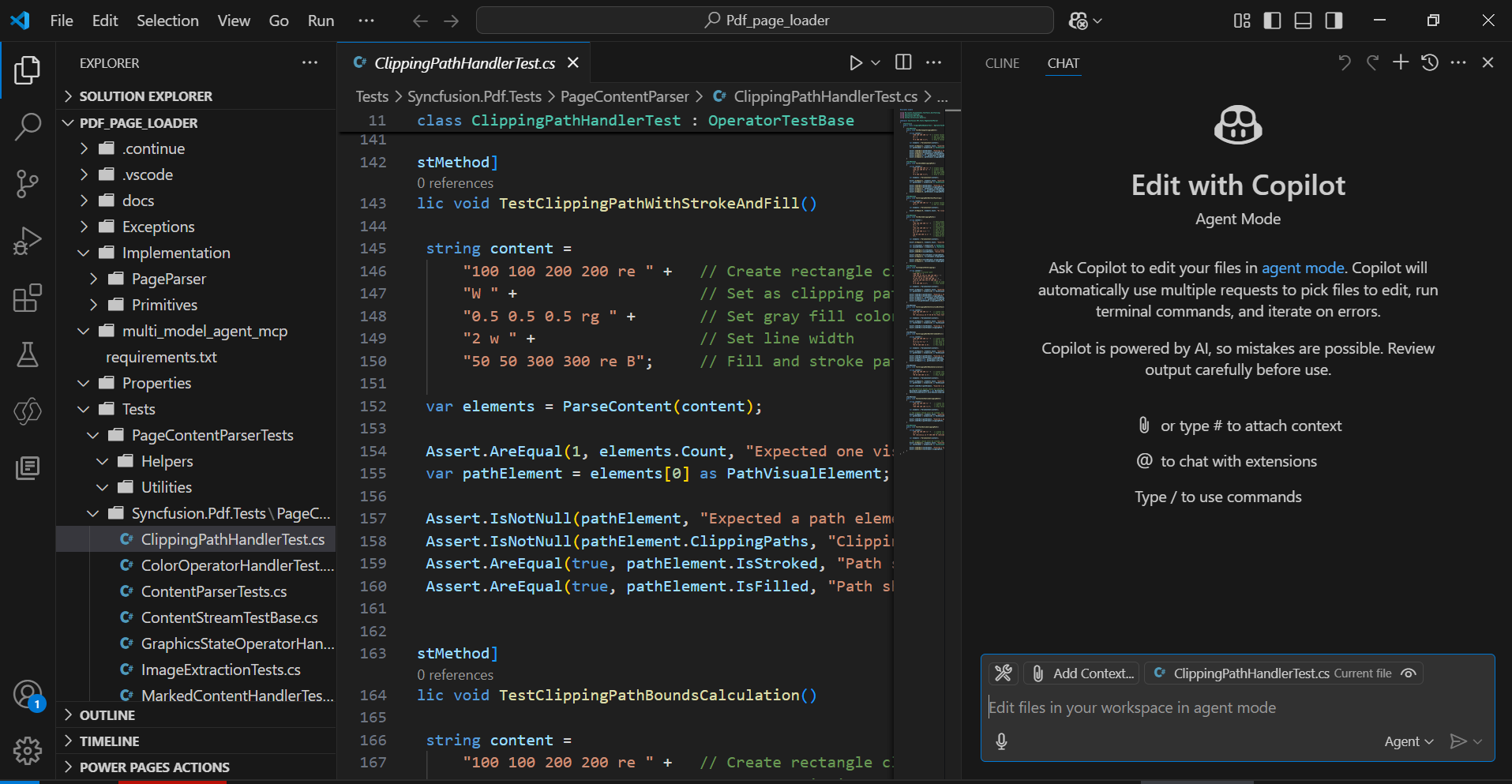
GitHub Copilot Code
Windsurf
Windsurf is an AI integrated development environment (IDE) developed by Codeium, designed to enhance developer productivity through advanced AI assistance. It combines the features of both a collaborative copilot and an autonomous agent, enabling seamless coding experiences
Key features:
Cascade agent: An intelligent assistant that understands your entire codebase, capable of executing multifile edits, debugging, and running commands based on your intent.
AI flows: Facilitates a synchronized workflow between the developer and AI, allowing for real-time collaboration and context-aware suggestions.
Supercomplete: Provides advanced code autocompletion by leveraging large language models to predict and generate code snippets.
Memories: Stores contextual information about your projects, enabling the AI to recall past interactions and maintain continuity across sessions.
MultiFile editing: Allows coherent edits across multiple files, understanding dependencies and relationships within the codebase.
Command mode: Enables execution of terminal commands directly within the IDE, with AI assistance for command suggestions and error handling.
Contextual awareness: Deep understanding of the codebase structure, facilitating accurate suggestions and modifications.
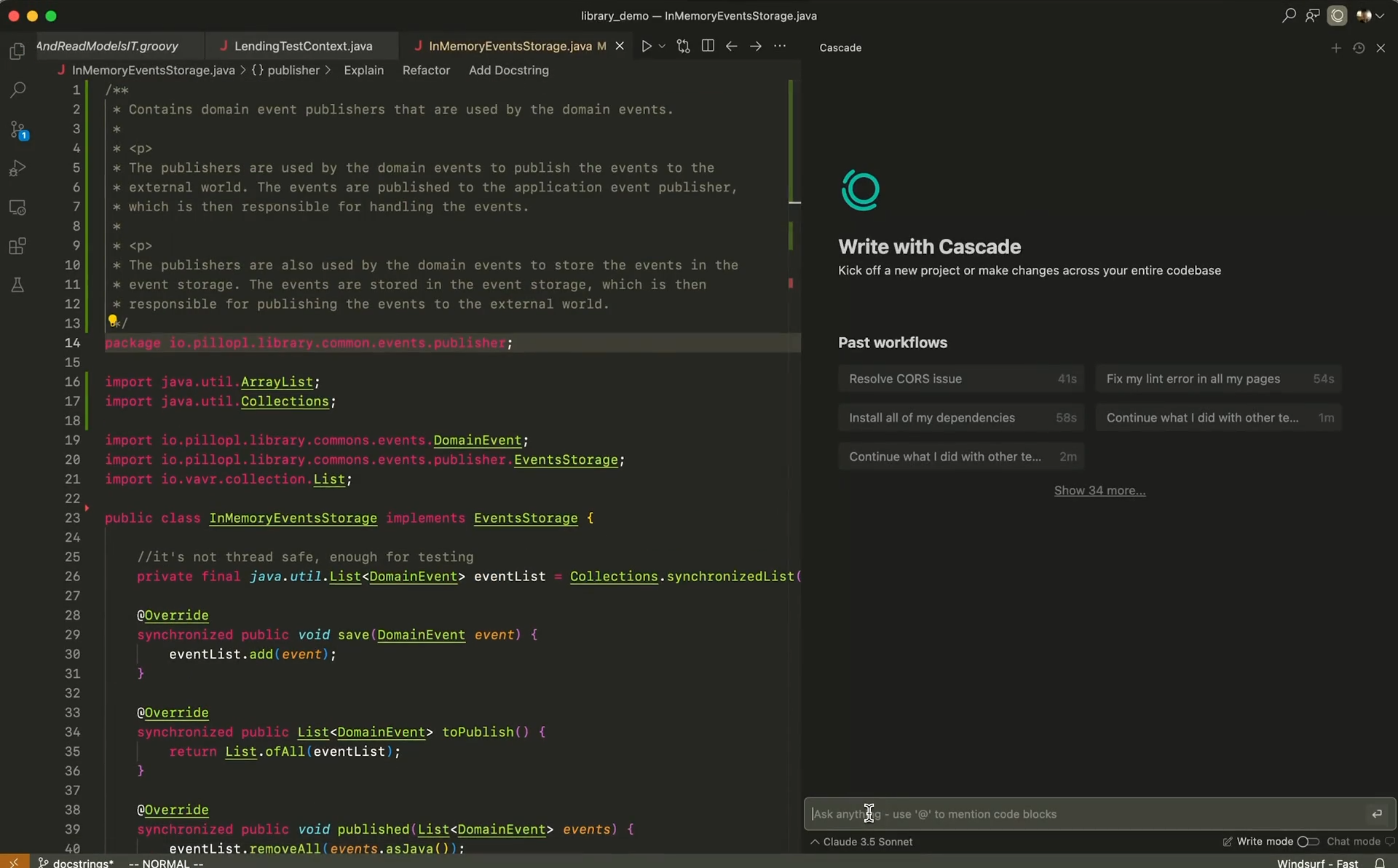
Windsurf
Cursor
Cursor is an AI integrated development environment (IDE) developed by Anysphere Inc. Built upon Visual Studio Code, Cursor enhances the coding experience by integrating advanced AI features directly into the development workflow.
Key features:
AI code completion: Cursor provides intelligent code suggestions, predicting multiline edits and adjusting based on recent changes to accelerate development.
Smart rewrites: The editor can automatically correct and improve code, even if typed carelessly, enhancing code quality and reducing errors.
Codebase understanding: Cursor can analyze the entire codebase, enabling developers to query and navigate code efficiently using natural language.
Integrated chat: An AI chat panel allows for real-time assistance, where developers can ask questions about their codebase and receive context-aware responses.
MultiFile editing: Cursor supports coherent edits across multiple files, understanding dependencies and relationships within the codebase.
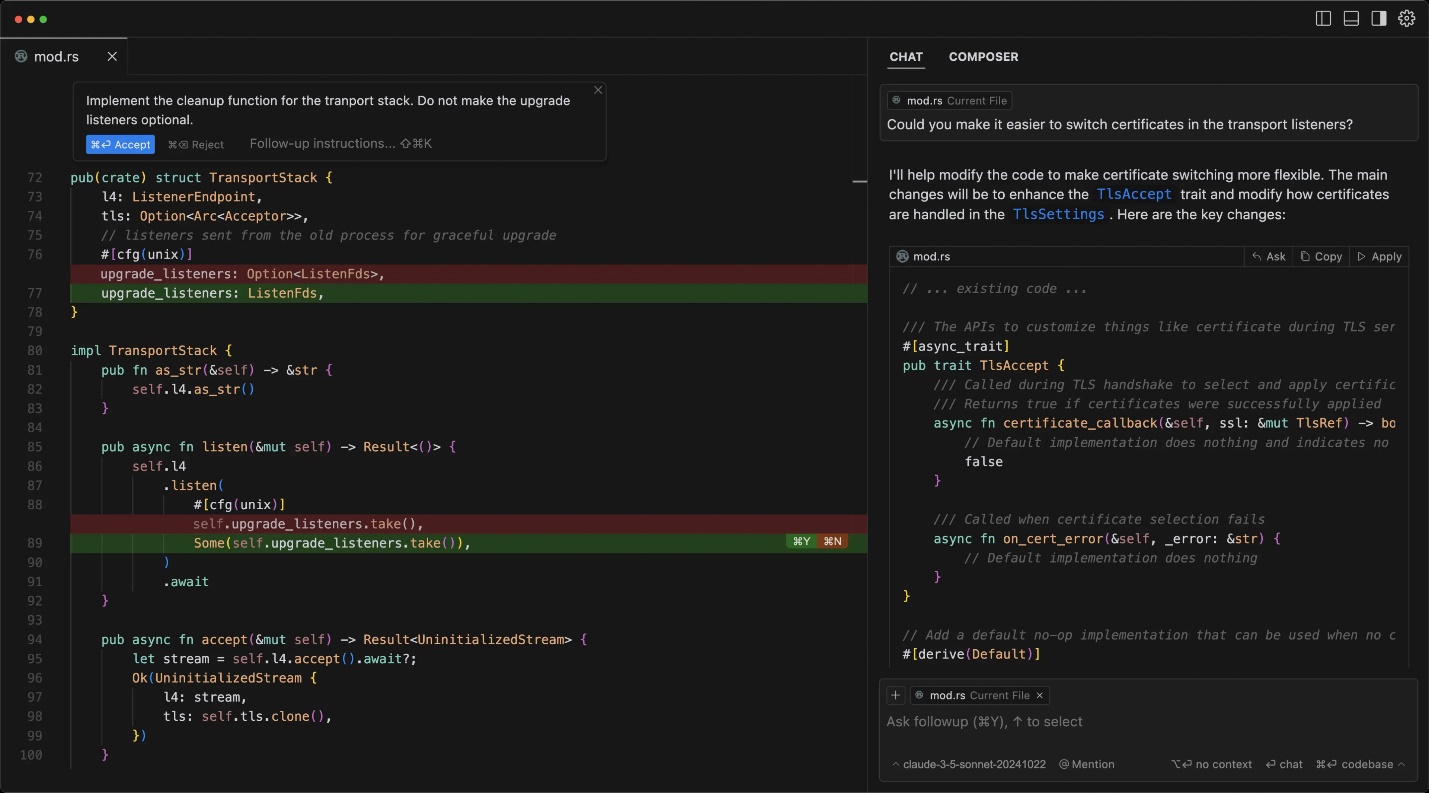
Cursor AI
Cline
Cline AI is an open-source, autonomous coding assistant designed to integrate seamlessly with Visual Studio Code. It functions as a collaborative AI agent, assisting developers in planning, executing, and managing coding tasks directly within their development environment.
Key features:
Plan operational mode: Allows developers to outline tasks in natural language, with Cline providing a step-by-step plan and reasoning before any code is written.
Act operational mode: Executes the planned tasks, including code generation, file creation, and command execution, with options for user approval.
MultiModel support: Integrates with various AI models such as Anthropic’s Claude 3.7 Sonnet, DeepSeek Chat, and Google’s Gemini 2.0 Flash, providing flexibility in choosing the most suitable model for specific tasks.
Terminal command execution: Capable of running shell commands directly within VS Code, allowing for tasks like package installations, server management, and test executions without leaving the IDE.
Browser automation: Utilizes browser capabilities to perform actions such as clicking elements, typing text, and capturing screenshots, facilitating tasks like end-to-end testing and debugging.
Contextual awareness: Maintains an understanding of the entire codebase, enabling it to make informed suggestions and modifications across multiple files, and to recall past interactions for continuity.
Privacy and security: Designed with enterprise-level security in mind, Cline does not track or store user data and allows integration with private AI endpoints, ensuring code privacy.
Open-source and extensible: Being open-source, Cline encourages community contributions and allows developers to customize and extend its functionalities to suit their specific needs.
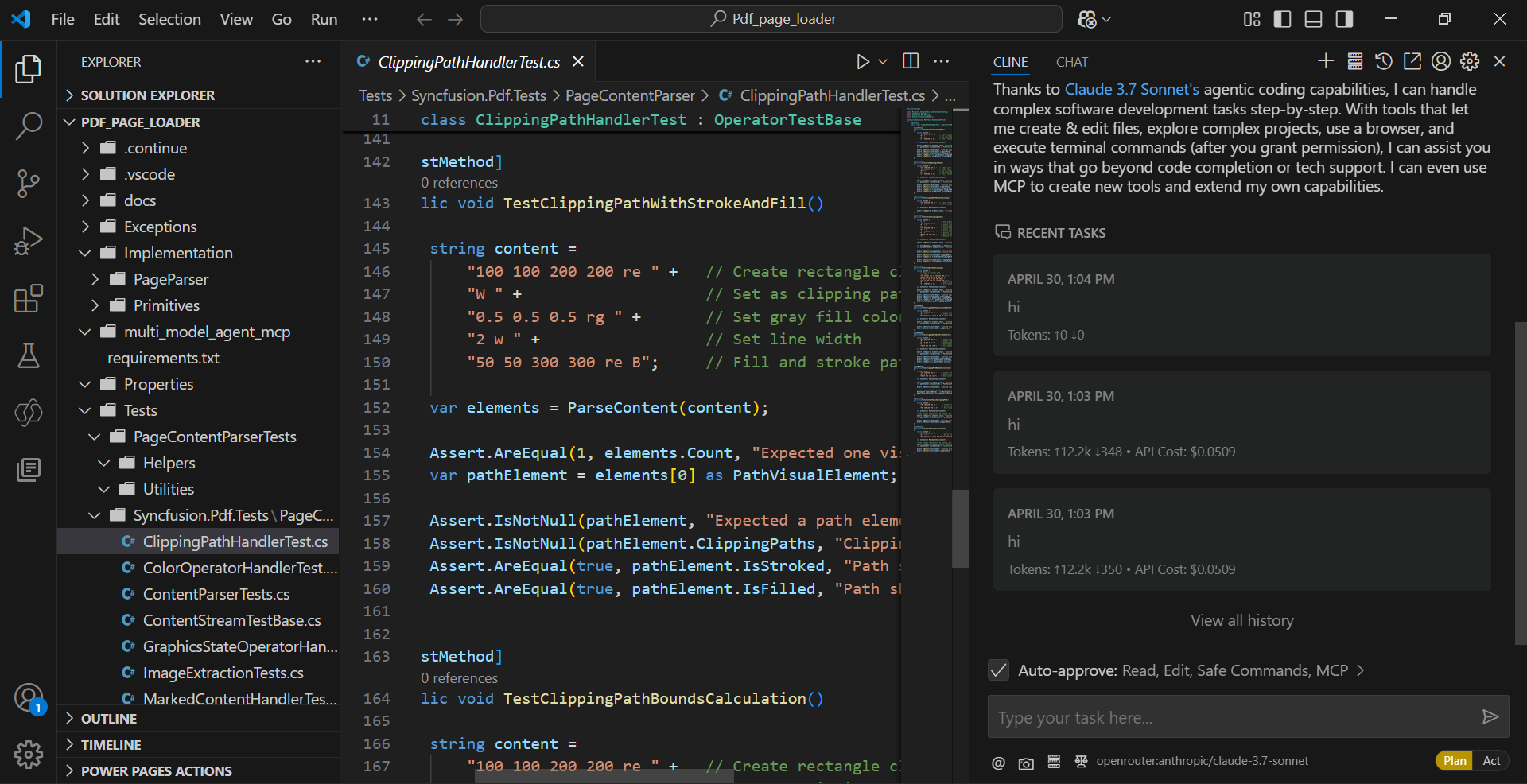
Cline AI
Why AI fluency matters more than your editor’s choice
Most modern editors provide similar AI features. Whether you’re using VS Code, JetBrains, Cursor, or something else, you’ll likely have access to autocomplete, chat-based support, test generation, and code transformation tools.
What sets developers apart in 2025 isn’t which editor they use, it’s how well they use AI inside that editor. Mastering the art of prompting, revising, and collaborating with embedded AI is the new frontier of productivity.
What your editor’s AI can do
Today, nearly every editor supports:
Autocomplete and real-time code suggestions.
Refactoring and code transformation via AI.
In-editor chat agents for explanations, debugging, and documentation.
Summarization and test case generation.
Autonomous file creation and diff-based editing workflows (e.g., Cline).
Integrated terminal execution and shell command handling.
Browser automation for testing or scraping tasks.
Custom tool integrations (e.g., Jira, cloud services) through context-aware agents.
API/model integration with LLMs like GPT-4, Claude, Gemini, and local models.
Error detection and auto-resolution for missing imports, syntax issues, etc.
Whether you’re writing frontend code or deploying backend services, AI can help at every step if you know how to ask.
Collaboration, not delegation
AI support isn’t just about automating repetitive tasks—it’s about augmenting your workflow. Developers who treat AI as a genuine collaborator by asking experiential, clarifying, or iterative questions see richer, more relevant outcomes. Anthropic describes this as the era of “augmented LLMs,” where your assistant has retrieval, tool usage, and memory, right inside your workspace.
Workflows vs. Agents
According to Anthropic:
“Workflows are systems where LLMs and tools are orchestrated through predefined code paths. Agents, on the other hand, are systems where LLMs dynamically direct their own processes and tool usage, maintaining control over how they accomplish tasks.”
For complex tasks, workflows provide predictability and consistency, making them ideal for well-defined processes. F_or example, they’re good for managing the backend development lifecycle from API design to deployment using structured sprints and code reviews._
In contrast, agents are better suited for scenarios that require flexibility and large-scale, model-driven decision-making. An AI agent can dynamically analyze service logs, detects anomalies, and proposes fixes across distributed systems, for example.
That said, in many cases, simply optimizing individual LLM calls with retrieval and in-context examples is sufficient, like answering “How do I optimize Entity Framework queries?” using relevant documentation and performance tips from prior projects.
Why AI skills are the new developer superpower
In the past, developer efficiency was about mastering shortcuts, frameworks, or deployment tools. In 2025, your most valuable skill is your ability to communicate with LLMs.
Prompt design. Clarifying feedback. Knowing when to rerun or refine. These are the new must-have skills for working software engineers.
How teams can harness embedded AI
Entire teams can boost velocity by:
Sharing prompt strategies and templates
Training on effective AI use cases
Integrating AI into onboarding and review processes
Organizations that invest in AI fluency will ship faster, maintain higher quality, and foster a culture of augmented creativity.
Conclusion
AI-powered code editors have fundamentally changed the way developers build software. The editor itself is now just your entry point. True productivity gains come from mastering AI collaboration, designing effective prompts, and building thoughtful workflows. As these tools become standard across every platform, your ability to harness embedded AI will set you apart. Don’t just use your editor—form a partnership with the AI within it and elevate how you code, learn, and ship.
If you have questions, contact us through our support forums, support portal, or feedback portal. We are happy to assist you!
Related Blogs
Subscribe to my newsletter
Read articles from syncfusion directly inside your inbox. Subscribe to the newsletter, and don't miss out.
Written by

syncfusion
syncfusion
Syncfusion provides third-party UI components for React, Vue, Angular, JavaScript, Blazor, .NET MAUI, ASP.NET MVC, Core, WinForms, WPF, UWP and Xamarin.